|
Table of Contents for
[Session2] Making Effective Presentation
--This Session's Task[2-1] (Assignment)
How to Publish Research Articles in Professional Journals
--This Session's Task[2-2] (Assignment)
Assignment Submission
|
Your location: Home Page > [1] Instructional systems research methods > [Session2] > Making Effective Presentation > Creating Presentation Slides for an Academic Conference
Special Research I
|
| Contents | Explanation |
|---|---|
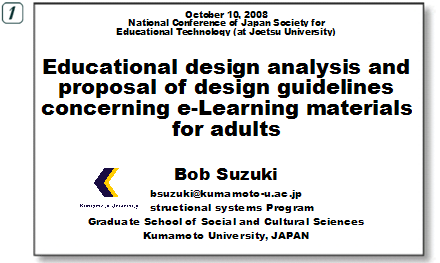 |
The first slide should include the title, the name of the presenter, the place, and occasion of the presentation. Do not forget to include “Instructional systems Program, Kumamoto University” to advertise it. |
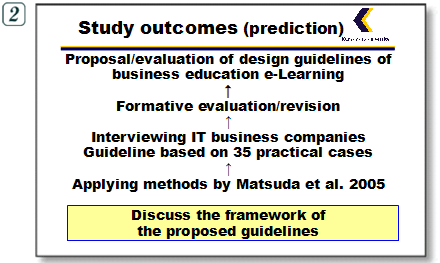 |
Conclusion of the study should be on the second slide. It should intend to draw attention: “What? Is it correct?” Putting a conclusion, rather than a table of contents, is recommended (Note: This is Suzuki's personal preference, not a golden rule). |
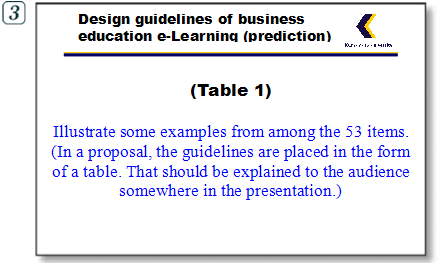 |
In order to show concrete study outcomes, a concrete statement or image should be given at as early as possible. For example, show a developed user interface in the case of a system development study and detailed items in the case of a guideline development study, etc. |
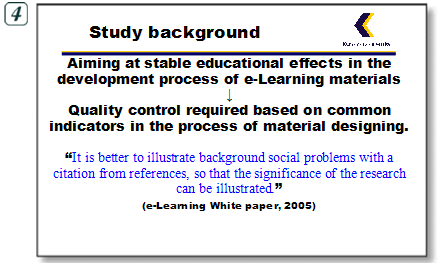 |
From this point, items are going to be covered according to the flow of the proposal manuscript. The study background should be stated from the outset. Using citations, it should be made clear that the research is conducted not for satisfying a mere subjective interest (even if it is so) but for challenging a scholarly and socially important issue. It should make the audience think there is definitely such an issue. |
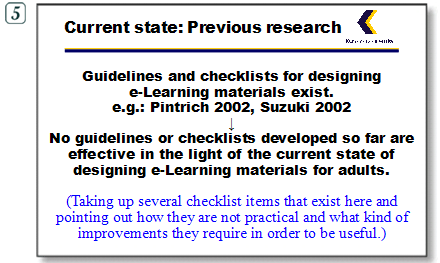 |
Indicate current progress in the field. In order to demonstrate that your research has achieved what past research could not, explain what past research has been carried out and where it is lacking, and that your research has filled the gap. Let the audience know you are engaging in your research, recognizing the importance of previous studies. The researchers who conducted (or those related to) those previous studies may be present to listen your talk. So, you should not be too negative toward those studies. |
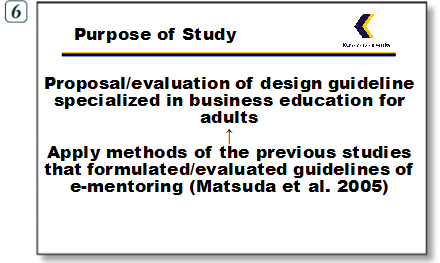 |
State the purposes of your study. This presentation slide introduces the name of the previous studies that played an important role in the implementation of this study. It is also effective to show “Educational Implications” (Indicate who will benefit when the study purpose is fulfilled. The audience may benefit from .) |
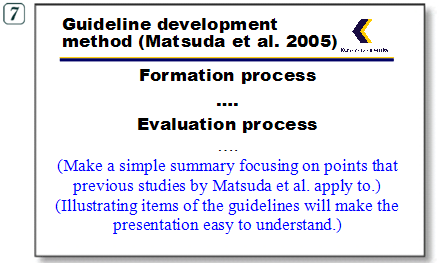 |
When you introduce the name of a previous study that played an important role in your study, also introduce the outline of the that study. Especially, explain details of the referred parts as clearly as possible. |
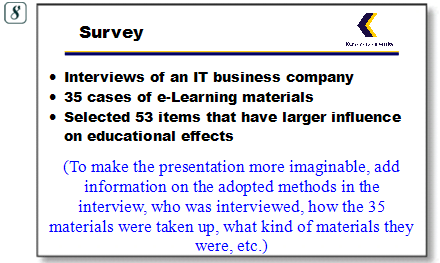 |
Introduce the study procedure in order. Explain first how the survey was planned, and what results were generated. It may be good to use several slides, as required, to show specific examples. |
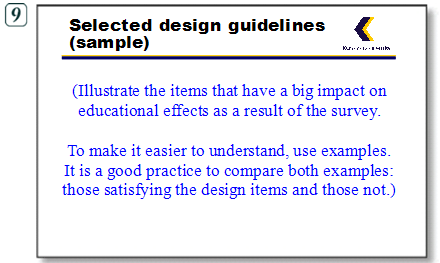 |
This is an example of a slide which shows specific examples in the explanation of the survey (Display a slide in this way). |
 |
This is a continued explanation of the study method. Describe how the formative evaluation of the guidelines was conducted and what results were generated. It may be good to use several slides, as required, to show specific examples. |
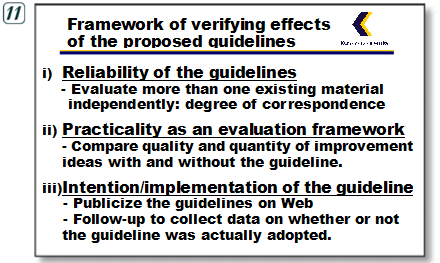 |
Summarize what this research could not cover (actually, what the presenter wanted to do) as a suggestion of what to do in the next stage. As they have not been done (or are not done), do not spend much time on these. The main purpose here is to give the audience an impression that the next stage is well thought out, and to tell them that the presenter recognizes the limitations of his/her research. |
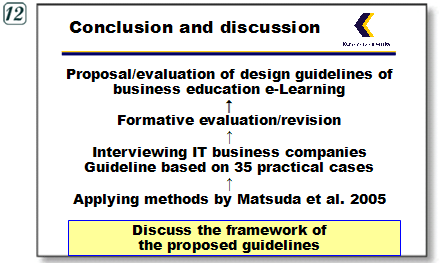 |
At the end, “Say what you have said”. Include this slide partly for the purpose of time adjustment. It is nonsense to show the slide where “Thank you for your attention,” or “I'd be glad to take your questions” is written. It is enough just to say so. If time remains, review the presentation by slowly reading the phrases on this slide aloud. If you do not have time, you can finish after displaying this slide saying “This is the end of my presentation. I would be grateful for any opinions.” |